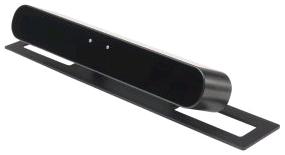
Camera enabling eye controlled computer operation.
Speechbubble's description:
Although not a communication aid in itself, the Quick Glance TM4 is a unit that plugs into most PCs to give eye gaze control (it's shown here attached to a Powerbox communication aid, but you can attach to other suitable PCs, aids and laptops). Mouse 'clicking' can be done with an eye blink, or by staring (dwell). A separate switch and switch-adapted mouse can also be used.
Unlike the earlier TM3, which had a mains power cable and a separate Firewire connection lead, The TM4 needs only a single USB2 lead which plugs into the PC or communication aid.
Manufacturer's Product Description
The manufacturer has not provided any further information about this product
Manufacturer's Contact Details
EyeTech Digital Systems
USA
Key Features
- Compatible with manufacturer's PowerBox 7, but can be used with any PC with Windows XP, Vista and 7 via USB
- Plugs in via a standard USB cable
- Designed to fit under any standard flat screen monitor or laptop
- Compatible with 12" to 21" monitor
- The software will work with the majority of users who wear contact lenses or glasses
- Options for dwell, blink or using a switch to select items onscreen
- The software allows for one eye use for calibration and tracking
- The software allows users to access standard Windows programs using off-screen buttons for mouse actions
Product Dimensions
| Software | |
|---|---|
| Linux | Feature not available |
| Mac | Feature not available |
| Windows | Standard |
Product Specification
No product specification has been specified.